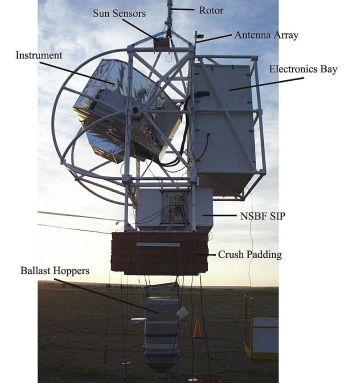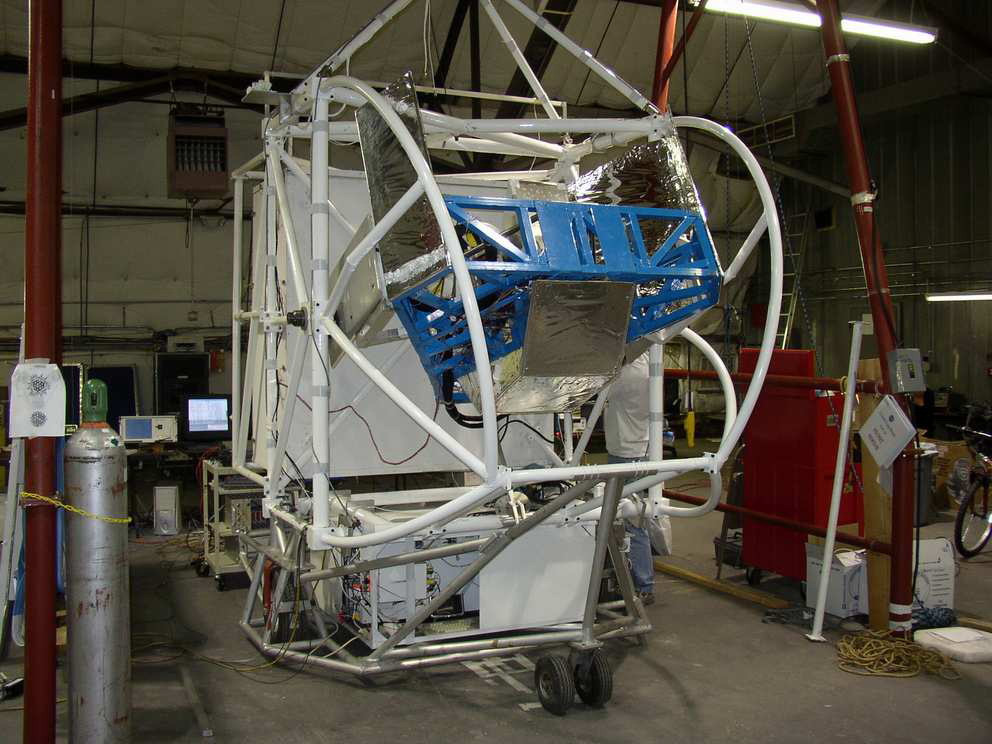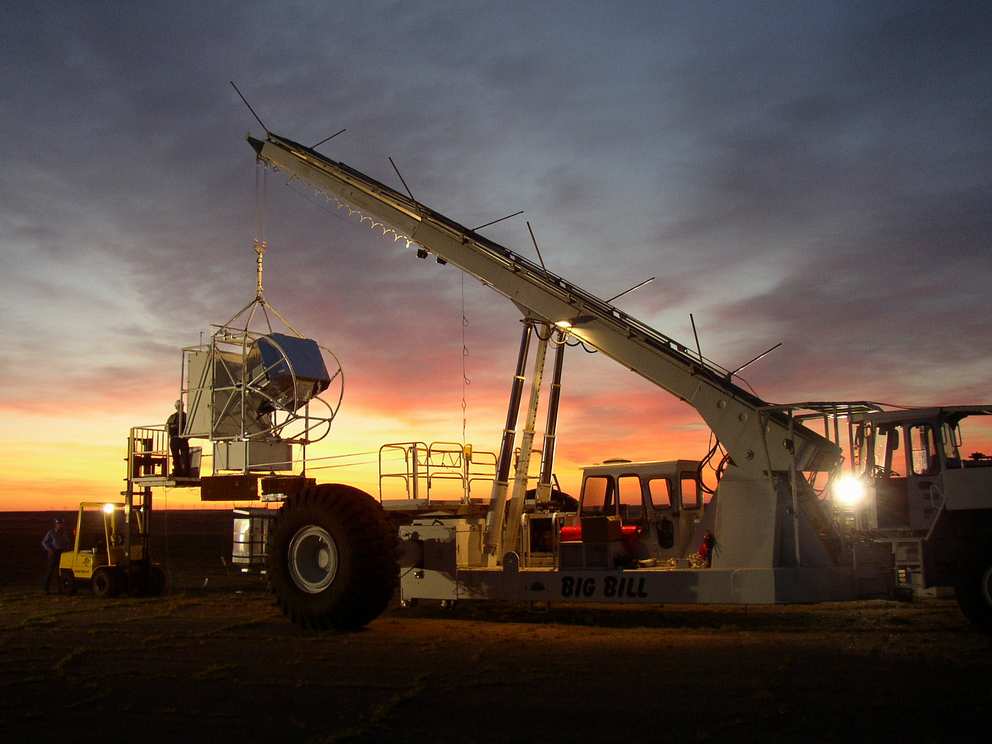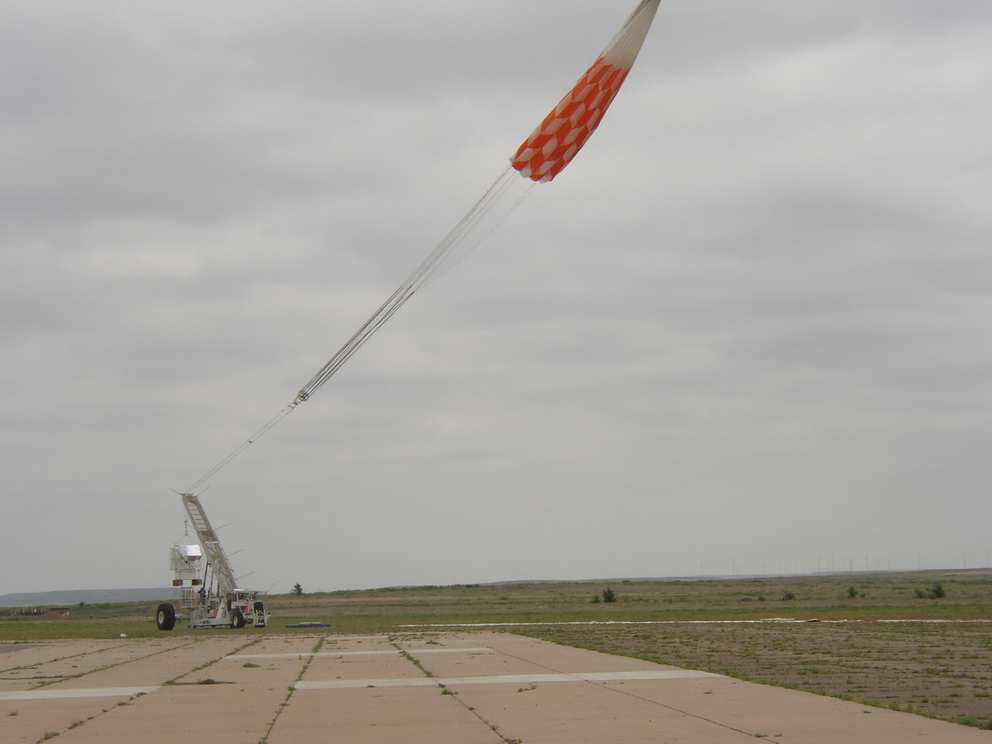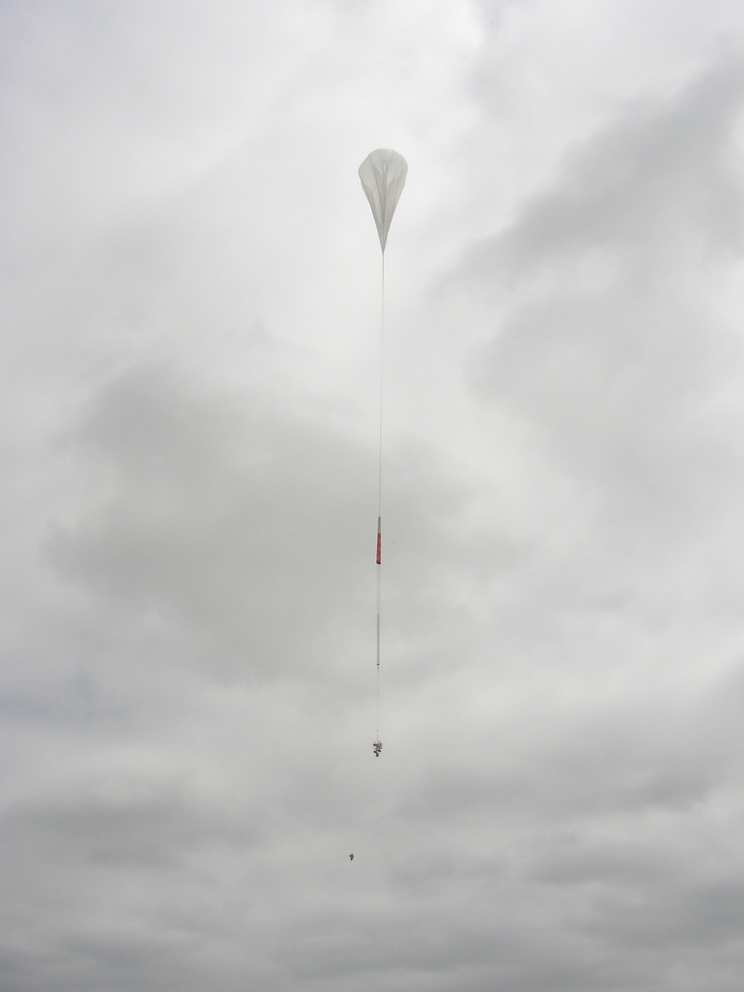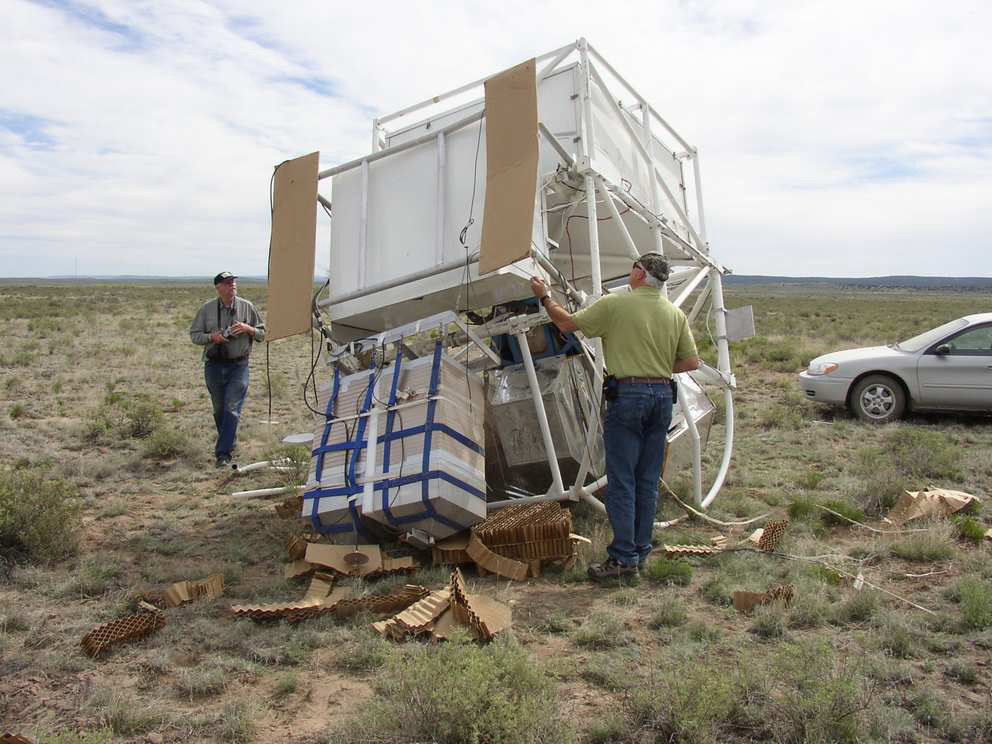Purpose of the flight and payload description
Is a balloon-borne soft gamma-ray (0.2-15 MeV) telescope designed to study astrophysical sources of nuclear line emission and gamma-ray polarization. It is part of the program to develop and test technologies and analysis techniques crucial for the Advanced Compton Telescope to be launched in 2015. At left we can see a image of the gondola ready for flight and indications of the distribution of every component (click to enlarge)
It employs a novel Compton telescope design, utilizing twelve 3D imaging, high spectral resolution germanium detectors (GeDs), enclosed on the sides and bottom by an active bismuth germanate (BGO) well, and with an overall field-of-view (FOV) of 25% of the sky.
The Compton imaging serves three purposes: imaging the sky, measuring polarization, and very effectively reducing background.
NCT's guiding principle is that high efficiency and excellent background reduction are critical for advances in soft gamma-ray sensitivity. The combination of Compton imaging, active shielding, and analysis techniques made possible with the 3D GeDs serve to dramatically decrease the background.
The heart of NCT is an array of 12 crossed-strip cryogenic germanium detectors with 3-D position resolution, excellent spectroscopy, and high efficiency. As widely known, Compton telescopes image gamma-rays by inversion of the Compton scatter formula. An incoming photon at MeV energies will undergo a Compton scatter at an initial position in the instrument, losing an energy related to the scattered photon direction by the Compton scatter formula. Then, the scattered photon looses the rest of its energy in the instrument in a series of one or more interactions ending in a photoelectric absorption. By measuring the position and energy of the interactions with high precision, the photon event can be reconstructed through the Compton formula to determine the initial photon direction to within an annulus on the sky.
The instrument and associated electronics are mounted in a pointed, autonomous balloon platform capable of long duration balloon flights whose design is based on the HIREGS instrument gondola developed at UC Berkeley and flown four times in the past.
Details of the balloon flight
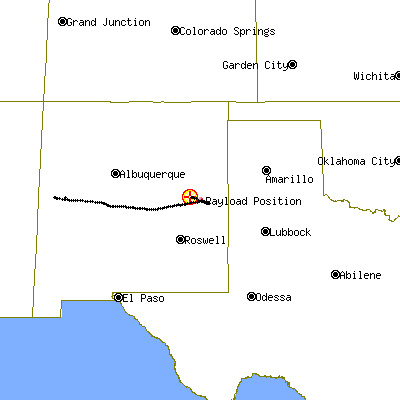
Balloon launched on: 6/1/2005 at 17:05
Launch site: Scientific Flight Balloon Facility, Fort Sumner, (NM), US
Balloon launched by: National Scientific Balloon Facility (NSBF)
Balloon manufacturer/size/composition: Zero Pressure Balloon Raven - 39.570.000 cu ft - (0.8 Mil.)
Balloon serial number: W 39.57-2-47
Flight identification number: 543N
End of flight (L for landing time, W for last contact, otherwise termination time): 6/2/2005 at 1:29
Balloon flight duration (F: time at float only, otherwise total flight time in d:days / h:hours or m:minutes - ): 9 h 7 m
Landing site: 68 miles northwest of Socorro, NM, USA
Payload weight: 2370 lbs
Overall weight: 4274 lbs
The launch (by dynamic method using launch vehicle) was complished at 17:05 utc on June 1st.
After a nominal ascent phase with the balloon heading east, a float altitude of 130.500 ft was attained and the balloon started a slow drift due west (click in the map at left to see the balloon flight path).
After near 9 hours of flight, at 1:29 utc of June 2th (according to utc time) the cutdown command was sent. The payload touched ground at 2:12 utc 8 nm northwest of Socorro, NM (Latitude 34-30.31 N / Longitude 108-06.62 West). Payload and balloon recovered.
The gondola frame suffered some minor and mostly cosmetic damage during impact, but is otherwise fine. The NSBF parachute termination package worked flawlessly, releasing the parachute from the gondola right after landing. Since the flight, the entire detector and data system has been powered up in the laboratory and is working fine. Neither the detectors, cryostat, nor electronics suffered any damage during the flight, landing, or recovery.
For this first engineering flight was used a reduced configuration with only two, 3D imaging germanium detectors (GeDs) and without solar panels. The mission had two main technological goals:
* To qualify the gondola for a future long duration balloon from Australia in 2010
* To measure the instrumental background, telemetry rates, data vault needs, etc., at float.
During the flight the instrument and associated electronics performed flawlessly, and were achieved both of these goals.
In the scientific side, the main objective was the observation of the Crab Nebula/Pulsar and the transient accreting pulsar 1A0535+262. Both pulsars are spatially close on the sky and therefore simultaneously fell with within the NCT field of view. The Crab was chosen because it is a well studied source, and an excellent one to calibrate on. The pulsar 1A0535+262 is transient, but the scientists were fortunate enough that it was in a rare outburst state during the flight. In addition to being able to image two bright point sources, 1A0535+262 provided the opportunity to search for hard X-ray cyclotron absorption features with unprecedented spectral resolution.
As discussed in detail above, the gondola pointing system was set up to keep the instrument at a fixed elevation, but to actively point in azimuth to keep the Crab centered in the field of view. Unfortunately, shortly after launch the azimuthal pointing system failed, seriously compromising the exposure to the sources and adding an extra level of complexity to the data analysis.
External references
- Nuclear Compton Telescope (NCT) home page at Space Sciences Laboratory, UC Berkeley
- Astrophysics Via Helium Balloon ScienceMatters @ Berkeley (on Archive.Org)
- First results from the balloon flight of the NCT prototype Proceedings of the SPIE, Volume 5898, pp. 13
- Preliminary Laboratory Performance of the NCT Prototype Flight Electronics SPIE, Volume 5165, pp. 131-138 (2004)
700If you consider this website interesting or useful, you can help me to keep it up and running with a small donation to cover the operational costs. Just the equivalent of the price of a cup of coffee helps a lot.

